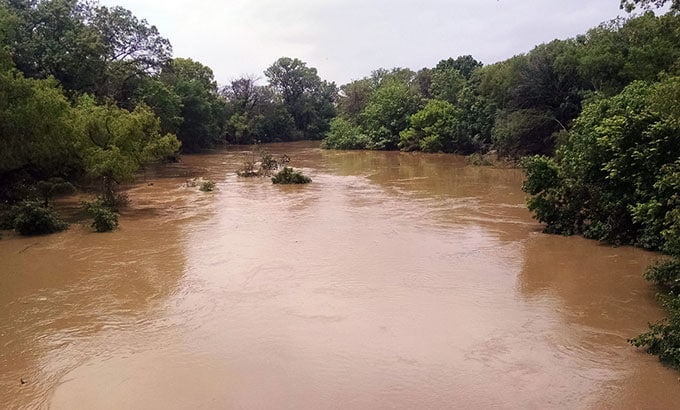Flooding in Texas, Spring 2016
In April and May of 2016, a record-setting 16.5 inches of rain caused the Brazos River in southeastern Texas to flood its banks, wreaking devastation on the surrounding counties. The floodwaters brought snakes, insects, and debris, killed six people, and led to more than 300 water rescues, hundreds of displaced persons, and the evacuation of two prisons. However, thanks in part to the infrastructure put in place by the PHEP cooperative agreement, state and local health departments were able to institute public health emergency management structures capable of leading and supporting public health responses.
PHEP-funded programs and infrastructure are often focused on local as well as state health departments. In this instance, the response was largely led by local health officials from Fort Bend County, the area hardest hit by the flood. One such program was Enable Fort Bend, an identification and registry system for residents of Fort Bend County who would require assistance in case of evacuation. This registry grew out of a need for more detailed and updated information than the state registry was able to provide, a need which was highlighted during Hurricane Ike in 2008. Entire facilities or individuals and families can register for emergency assistance using Enable Fort Bend, which is GIS enabled to automatically identify the regions and residents most at risk during an incident. Based on the need, residents are then provided with necessary medical supplies or evacuated though a contract with private ambulance companies.
Additionally, local and state health department staff cited previous training and experience, both made possible under the PHEP cooperative agreement, with the WebEOC platform as vital components of the successful flood response. WebEOC is an online incident management system that, in the response and recovery phases of the Texas floods, allowed health department staff to give real time health updates, such as boil water advisories, to multiple jurisdictions at once.
Beyond specific programs created for emergency response, responders said what made this response run the most smoothly was that responders were able to fall back on lessons learned during their previous training. In the past few years, the Medical Reserve Corp underwent continuous PHEP-funded trainings and exercises. During the flood, while the American Red Cross and other relief agencies were overwhelmed by the response in other parts of the state, the Medical Reserve Corp provided the bulk of the response personnel in Fort Bend County, staffing shelters and resources centers for more than 500 hours.

In April and May of 2016, a record-setting 16.5 inches of rain caused the Brazos River in southeastern Texas to flood its banks, wreaking devastation on the surrounding counties.
The Incident
In the spring of 2016, a massive flood devastated Fort Bend County, Texas.
The Response
Local and state public health departments used pre-existing PHEP-funded programs and preparedness measures, such as Enable Fort Bend, WebEOC, and trainings and exercises, to quickly and effectively respond to a flooding crisis.
The Outcomes
Residents were safely evacuated using Enable Fort Bend, and countless hours were saved and redirected to other response efforts due to the effectiveness of WebEOC and staff familiarity with Incident Command System management procedures.